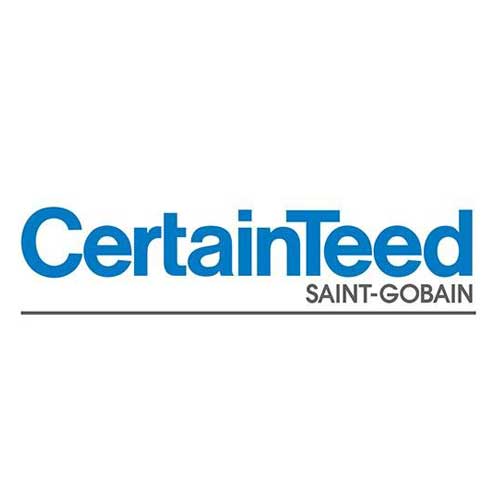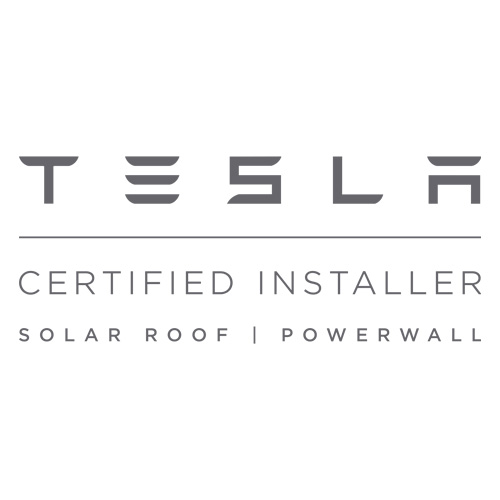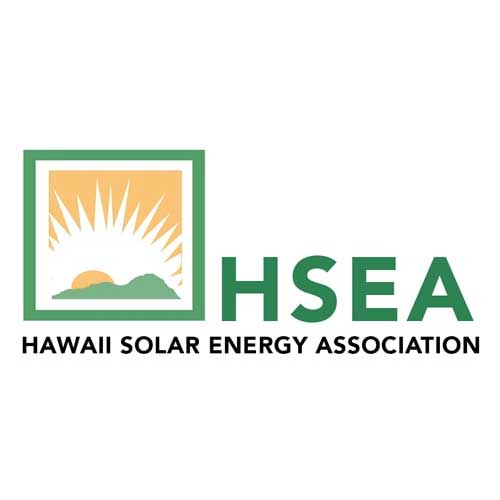Which Way Should Solar Panels Face In Hawaii?
In the beautiful state of Hawaii, one of the most often asked questions about solar panel installation is which way should they face. With its near perfect climate and abundant sunshine all year round, it’s no wonder that more and more people are taking advantage of the free power provided by the sun to reduce their energy bills. It’s important to understand how solar panels work in order to make sure that you install them correctly- so which way should they face?
The answer depends on a variety of factors, but in general, for optimal efficiency, solar panels should be facing south when installed in Hawaii. This is due to the fact that the sun rises in the east and sets in the west, so by having your panels face south they will be able to capture sunlight throughout most of the day. In fact, research done in Hawaii has shown that solar panels facing due south receive up to 15% more energy than those facing east or west.
Solar Panel Systems For Homes In Hawaii
If you’re considering installing solar panels to power your home in Hawaii, it’s important to know which way they should face. Solar panels work best when they receive direct sunlight, so they should be mounted on the roof or on the ground facing south. If you live in the Northern Hemisphere, your solar panels should also be angled at about 30 degrees to maximize exposure. For homes in Hawaii that are situated on the mainland, solar panels should be facing west to take advantage of the maximum amount of sunlight.
It’s important to keep your solar panel system clean to ensure optimal performance. Regularly clean all of your modules with a soft cloth and a mild detergent solution – this will help to prevent dirt and dust from building up over time and reducing your system’s efficiency. Finally, remember that solar power is a renewable resource – so don’t forget to enjoy the benefits of solar energy by using it whenever possible!
Which Way Is Best For Solar Panels To Face In Hawai’i?
The sun is the source of all our energy, and it’s important that your solar panels are able to capture as much of that energy as possible. This is why it’s important to know which way your home should face when it comes to solar panels.
In the Northern Hemisphere, solar panels should face true south if possible. This is because the sun rises in the east and sets in the west, so this is the best direction for panels to face. If you live in a colder climate, then south-facing panels will help to keep your home warm during winter.
In the Southern Hemisphere, solar panels should face true north if possible. This is because the sun rises in the east and sets in the west, so this is still one of the best directions for panels to face. However, there are some drawbacks to facing north – during summertime, glare from sunlight can be a problem. If you’re located near an equator, then you don’t have any choice – your solar panel must face true south!
If your home is due east or west (i.e., due north or south of Hawaii), then a south-facing roof will work best for you. This direction allows sunlight to enter through both sides of your roof while preventing direct exposure from sunrise until sunset (which can reduce electricity costs). Finally, remember that as you move closer towards either pole (the North or South Pole), it becomes more important that your solar panel faces true south (in the Northern Hemisphere) or true north (in the Southern Hemisphere).
Solar Panel Rotation And Tilt In Hawaii
If you’re considering installing solar panels in Hawaii, it’s important to understand the different rules that apply to this climate. In general, solar panels should face true south if possible. This is because the sun’s rays are strongest in the morning and midday, and your panels should be facing that direction for the best results. If you can’t install them facing south, tilt them around 20 degrees from true south. Rotation should also be set so that the panels are perpendicular to the sun’s rays at solar noon – this will ensure the most efficient use of your solar energy.
Hawaii has some of the highest electricity rates in America, which makes solar a great way to save money on your energy bill. The average daily solar energy incident on Hawaii is about 5 kWh/m2, which is more than double what it is on average in other parts of America. Plus, Hawaii has some of the best sunlight exposure rates in all of America – meaning your panels will produce even more electricity than they would elsewhere! Solar can be a great way to power your home or office without having to spend a fortune on energy bills. Talk with a qualified installer today and see how solar can help you save money on your electric bill!
Which Way Should Solar Panels Face In Hawaii?
When it comes to solar panels, there are a few things that you need to take into account. The first is which way your panels should face – North, South, East, or West. This is based on the angle of your roof and the time of day.
For example, if you have a North-facing roof, your panels should be facing North. If you have a South-facing roof and it’s daytime (noon or later), then your panels should be facing South. East and West are the same as North and South, respectively – they’re always oriented towards the sun’s position in the sky.
The next thing that you need to consider is the angle of your roof. Your roof can either be flat or sloped. If it’s sloped, then you will want your solar panels facing towards the slope so that they can collect more sunlight. However, if your roof is flat then you will want them facing away from the slope so that they don’t get in the way.
The third thing to consider is how much sun you get on a daily basis. This will determine which type of panel is best for you – Thin Film or Polycrystalline Silicon (PCS). PCS panels are good for people who get a lot of sunlight because they’re less reflective than Thin Film panels and they also last longer in direct sunlight than Thin Film panels do. However, if you don’t get a lot of sunlight then Thin Film may be better because it’s less expensive and it doesn’t require as much maintenance as PCS does.
Finally, there’s budgeting – what kind of budget do you have? Do you want to go with cheaper options like Polycrystalline Silicon (PCS) or pay more for something like Monocrystalline Solar Panels which are more efficient? It all comes down to what fits best within your budget!
Effect Of Seasonality On Solar Panel Rotation And Tilt In Hawaii
Solar Panel Tilt in Hawaii.
There’s no question that solar panels tilt in the direction of the sun throughout the year. However, what affects rotation and tilt most is seasonality. In Hawaii, for example, solar panels rotate and tilt more in response to seasonal changes. This means that it’s important to adjust your solar panels throughout the year to maximize their absorption of sunlight.
Below are some helpful tips on how to adjust your solar panels so that they can maximize sunlight absorption:
– Solar panels should be tilted towards the sun by about 20 degrees during the winter months (when the sun is lower in the sky).
– During summer months (when the sun is higher in the sky), solar panels should be tilted less towards the sun – about 10 degrees should be sufficient.
– There are online tools that can help you calculate optimal tilt for your specific needs, based on your location and seasonality. By using these tools, you’ll ensure that your solar panel rotation and tilt are always optimized for maximum efficiency.
Solar Panels Should Be Rotationally Tilt-Ready In Hawaii
If you’re thinking of installing a solar panel system in Hawaii, it’s important to be aware of the rotationally tilt-ready requirement. This means that the panels can be rotated to face the sun as it moves across the sky. This will allow them to collect more energy than systems that are not rotationally tilt-ready.
One downside of not having rotating panels is that they will not be able to produce as much energy. However, for those living in a sunny state like Hawaii, this may not be an issue. The extra energy that is collected can then be used to power your home or business – making the investment worth your while.
There are also other benefits that come with having rotationally tilt-ready solar panels systems in Hawaii. These systems are more expensive, but they offer higher performance and longer lifespan than non-rotationally tilt-ready panels. Plus, they’re more reliable when it comes to generating electricity – something that is especially important in Hawaii where weather conditions can change rapidly. If you’re looking for an affordable and reliable way to power your home or business in Hawaii, look no further than rotationally tilt-ready solar panel systems!
How Long Do Solar Batteries Hold Their Charge?
If you’re like most people, you know that solar panels are a great way to reduce your carbon footprint and energy costs. Solar batteries are a great way to store this energy for later use, and they can even be used to power your home in the event of a power outage. However, there is one thing that you need to keep in mind if you live in Hawaii: your solar panels should face towards the sun.
Most solar batteries will hold their charge for a long time if they’re kept away from extreme heat or cold. However, the best way to increase the lifespan of your battery is to keep it away from both extremes. If you live in a climate where it’s hot all year round or cold all year round, it’s important to have some sort of storage system – like solar batteries – so that you can use this energy when the weather is more temperate.
Solar batteries can also be used to store energy for later use. This could be something as simple as using them to power appliances during off-peak hours when electricity rates are lower or storing electricity generated by wind turbines so that it can be used during times of high demand. In addition, solar batteries can also be used as backups for electrical systems in case of an outage. So whether you’re looking for ways save money on your electric bill or simply want added security and peace of mind during uncertain times, solar batteries may be just what you’re looking for!
Understanding How Solar Panels Work In Hawaii
Understanding how solar panels work in Hawaii is important if you want to get the most out of your investment. Throughout the year, the angle of the sun changes, and this affects how solar panels function. In the summer, when the sun is high in the sky, solar panels should be pointing as close to directly at the sun as possible. This maximizes their exposure to sunlight and makes them work best.
In the winter, when the sun is lower in the sky, solar panels don’t need to be pointing as directly at the sun. Instead, they should be angled south in order to get optimal exposure. The latitude of Hawaii means that solar panels will be able to generate more power here than anywhere else in America. Plus, keeping your solar panel clean is essential for optimal performance – otherwise dirt and debris will block sunlight from reaching them and they won’t work as well!
Solar Battery Maintenance For Homes In Hawaii
When it comes to solar energy, Hawaii is king! Not only are the sun and Hawaiian weather perfect for solar panels, but Hawaiian homes are typically designed with solar in mind. That’s why it’s important to know which way your solar panels should face in order to optimize their performance.
In Hawaii, solar panels should face true south. This means that the panels should be positioned so that they’re facing towards the sun’s rays directly. The optimum angle for solar panels in Hawaii is 20 degrees, and arrays will produce more electricity at this angle. Additionally, homeowners in Hawaii should clean their panels regularly – preferably every 6 months – to maintain their efficiency and minimize the amount of dirt, dust, and leaves that can reduce output from the panels.
Solar energy is a great choice for homeowners in Hawaii who want to reduce their reliance on fossil fuels. By installing solar panel arrays in your home, you can take advantage of free renewable energy while also reducing your carbon footprint. If you’re not sure whether or not solar power is right for you, consult with a qualified technician like Pono Solar who can help optimize your system for maximum performance.
Which Direction Do Solar Panels Should Befacing To Maximize Production
Hawaii is a great place to install solar panels because of the amount of sunlight that shines down on the island. Solar panels work best when they are facing the sun, so it’s important to make sure that you’re installing them in the right direction. The best way to do this is by angling them at about 20 degrees. This will maximize production and ensure that your solar panels are getting the most sunlight possible.
It’s also important to clean your solar panels regularly to keep them running their best. By doing this, you’ll be able to produce more electricity and save money in the long run. Plus, regular cleaning will remove any dirt, dust, or debris that could damage your panel and reduce its lifespan.
Finally, be aware that Hawaii is an extremely sunny place – so don’t hesitate to put up some solar panels!
Solar Panel System Maintenance For Homes In Hawaii
Solar panels are a great way to generate energy for your home, but like anything else, they need to be maintained in order to stay efficient. If you’re living in Hawaii, it’s generally best to face your solar panels towards the south – this will maximise their output. However, there are a few exceptions to this rule. If your home is located in a shaded area, you may want to consider facing your solar panels towards the east or west. Additionally, solar panel system maintenance is important no matter which way your solar panels are facing. Be sure to have your system checked regularly and make sure that it’s operating at its peak efficiency. In Hawaii, solar panel systems can produce a great deal of energy – be mindful of how much power your system is generating! If you have any questions about solar panel system maintenance or want to learn more about installing or using Solar Panels in Hawaii, contact a professional today!
Knowing The Right Way To Mount Solar Panels
Knowing the right way to mount solar panels is essential for homeowners in Hawaii. The sun provides the energy that helps to power our homes, and solar panels are a key component of this process. By following these simple guidelines, homeowners can maximize their energy output and get the most out of their investment.
When it comes to orienting solar panels in Hawaii, homeowners should orient them north so that they receive the most sunlight possible. This will ensure that your system is operating at its peak efficiency and you’ll save money in the long run. In addition, solar panels in Hawaii should be installed at an angle that is equal to the latitude of the location. This will ensure that the system receives optimum sunlight throughout the day.
seasonally, solar panels should be adjusted so that they are angled towards the sun as it moves across different parts of the sky. By doing this, you’re ensuring that your system is getting maximum performance all year round regardless of how cloudy it may be outside. Finally, make sure your home is free from any shading and install your solar panels in an area where there isn’t any overhead obstructions – this will help to maximize your energy production. When it comes to keeping your solar panel systems clean – don’t wait! Cleaning them on a regular basis ensures peak efficiency for both you and your system.
Conclusion
It’s also important to consider other factors such as building orientation and weather conditions when pointing your solar panels in Hawaii – for example, if buildings block some areas from direct sunlight then you may need to adjust their orientation slightly or move them altogether! Similarly, if there are strong winds or heavy rains then you may want to add additional support or struggle with ground penetrating radar technology (GPRT)to ensure optimal performance at all times.
Finally, with any form of renewable energy collection there are many variables that influence its efficiency and output – location is just one part of a larger puzzle that includes tilt angles, panel size & layout, seasonal variation & weather patterns etc… To get maximum value from your solar installation it’s essential that all these elements are considered carefully before making any decisions about how best to point your solar array in Hawaii!









